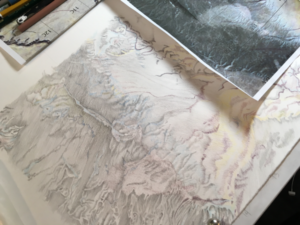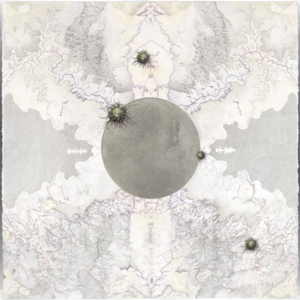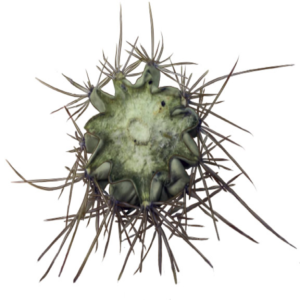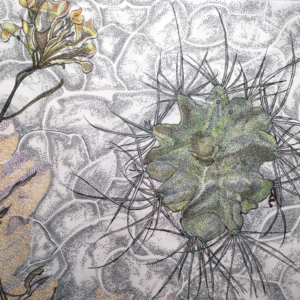My working process is influenced by my experience and interaction with the world around me.
In my studio, I produce layered, linear works that relate the terrains of the desert and outer space. I use botanical imagery of plants collected around my studio in Phoenix and also from the Herbarium at ASU, where I photograph pressed plant specimens from the locations in Arizona where the planetary discoveries were made. In drawing the satellite images of Earth and Pluto, my focus is on the similarities of surface and texture between images of Earth and the dwarf planet Pluto. Pluto was discovered at Lowell Observatory in Flagstaff, Arizona, and I have selected imagery from the Grand Canyon to represent the place of that discovery. After I combined the images, I placed a numbered grid on the surface, as pictured in the sequence of images that follow.

Figure 1: Gridded satellite photographs composed by placing Pluto in the center of mirrored sections of the North Rim of the Grand Canyon

Figure 2: Here, I am using the numbered grid to draw each section from the satellite image.

Figure 3: In the above image, the hand-drawn piece is finished and digitally photographed. It will be printed as an archival Ink Jet print titled “Inflection Point II.”

Figure 4: The digital drawing is then created using a combination of photographed and hand-drawn botanical images from the herbarium specimen pages. Pictured above is an early look at the process.

Figure 5: An enlarged example of the botanical elements in figure 4

Figure 6: Finally, the analog drawing will be layered with drawings of plant specimens from the Grand Canyon. In this image, the plains of Pluto are on the right, the Grand Canyon’s rim is on the left, and plants from the North Rim region are suspended above the terrain.
As the above images illustrate, I will use the botanical elements to connect the experience of the planetary researcher with the sense of physical place from which the scientific research originated and to the physical world of the viewer. As a part of my ongoing concern for the relationship between space and detail in the environment, I am creating a connection between conventional landscape formats in art and the perspectives offered by the study of planets and outer space. By combining the two perspectives with detailed observations of plants, I am creating holistic landscapes that encompass the intimate and the vast. This connects information that we know but cannot see with the reality of the things we can see and touch.